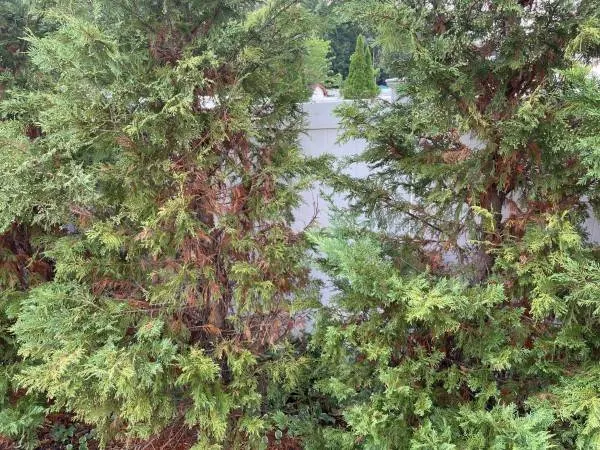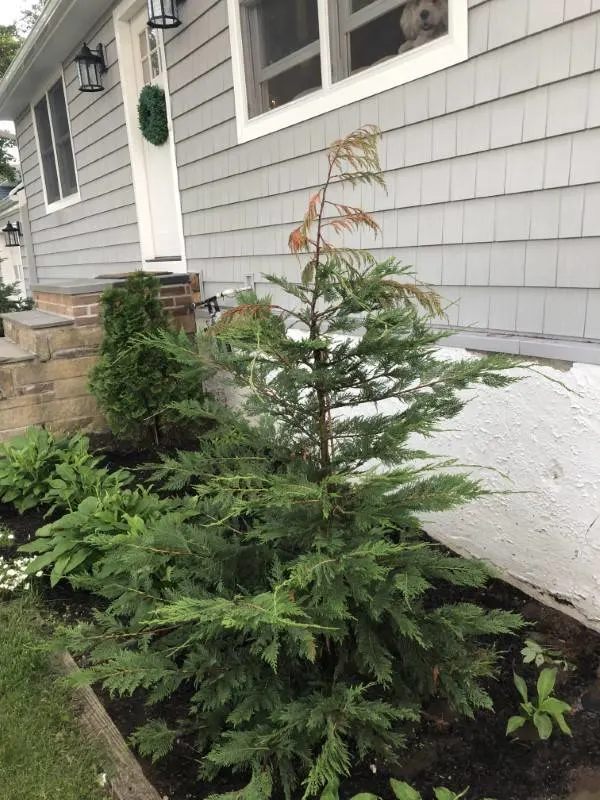Leyland Cypress trees are typical horticultural plants. Many homeowners enjoy including these plants in their landscaping. Being a fast-growing tree, it may reach a height of 15 meters in just 16 years.
Moreover, this tree requires little maintenance, making it perfect for those on the go. However, this does not imply that it is immune to demise.
One of the most popular searches among landscape and homeowner gardeners is how to save a dying Leyland cypress tree.
Cypress trees are one of the easiest conifer plants to cultivate, but they come with their own set of difficulties. If you have a cypress tree in your garden and it is not flourishing, you should strive to revive it as quickly as possible.
Yellowing foliage, brown leaves, stunted growth, isolated branches, and sliced bark are indicators of a dying cypress tree. To prevent the cypress tree from dying, you must first identify the problem so that you may address it.
This article on how to save a dying cypress tree will help you to tackle different issues and save your tree.

How To Save A Dying Leyland Cypress Tree: A Solution Guide
Here is a list of common problems and their recommended solutions:
Insects and Mites Issue
If the Leyland cypress tree branches are dying, it may be due to insects or mites. These are simple to deal with, but you must quickly identify the insects.
Bagworms and spider mites are two common insects that affect cypress trees. You should examine the foliage carefully for tiny holes or fine webbed lines.
A magnifying glass will help you see more clearly if there are signs of infestation. Spider mites feed on plant cells, killing the leaves and eventually destroying the entire plant.
The browning of your leaves is one of the indicators of a spider mite infestation. However, placing a white piece of paper beneath certain leaves and shaking the plant will prove this. You may see them moving on the page if you look closely through a magnifying glass.
Solution: You can treat the problem by removing debris from the branches and thoroughly cleaning them using a soapy solution. Spray the foliage with an insecticide if there are signs of infestation.
To get rid of the caterpillars, use a pesticide or handpick the silken bag formed by bagworms from your tree. Pick up the bag and spray the pesticide for the greatest results.
Use insecticidal soaps, high-pressure water, or a pesticide designed specifically to eradicate spider mites to get rid of them.
Dead Spots Issue
When your Leyland cypress tree has dead spots on its leaves, it may be due to lawnmower damage or weed hackers.
Solution: To fix the problem, you should remove any dead leaves and spray them with a copper and sulfur combination.
Over Watering / Under Watering Issues

The most important thing you can do when trying to save a dying Leyland cypress tree is to know when and when NOT to water it. In the winter, the tree should be watered once every two weeks.
In the summer months, water it twice a week. If you notice that your Leyland cypress tree has brown foliage or appears feeble, this is often caused by overwatering or underwatering.
Even though the Leyland cypress tree is drought-tolerant, appropriate irrigation is still required to keep it alive. Let it dry out a little before you water this Italian cypress again.
Solution: You must keep your soil moist but never wet. Water your trees frequently but do not saturate them. The best method is to water them by hand, ensuring that the soil does not dry out.
Early morning is the ideal time to water it generously so that the tree has enough time to absorb all of the water before nightfall.
You can water it again in the late afternoon, but only when the upper surface of the soil is completely dry. You only need to water it a little bit.
Fungal Infection Issues
The Leyland cypress tree is also vulnerable to fungi. Why? The reason for this is a fungus called a cypress canker, which infects the tree’s bark, causing long-term damage to the tree’s tissue. Canker appeared gradually, so if you catch it early enough, you might be able to save the tree.
Solution: You must remove the sick branch in order to preserve the healthy branches. It’s tough to rescue a cypress tree once 75% of its leaves have turned brown.
Lack of Nutrients
If your Leyland cypress tree has dieback and branches appear brittle and papery, this may be due to a lack of nutrients in the soil. Do not add fertilizer if your foliage looks healthy; only during the growing season (April through September).
Solution: Spraying with fertilizer and adding compost will fix the problem. You can also pour a high-nitrogen liquid into the soil to treat this condition.
Fluoride Toxicity
If your Leyland cypress tree shows signs of yellowing foliage, this may be due to fluoride toxicity.
Solution: To avoid fluoride toxicity, you must plant your trees at least 1 meter away from concrete structures and walls.
Provide the Plant with Proper Sunlight
Provide plenty of sunlight if you want your Leyland cypress tree to flourish. Provide shade during the hot summer months, but keep it in direct sunlight during the winter.
A cypress tree may struggle to thrive in a shaded region and perhaps perish. Every day, the cypress tree requires at least 8 hours of sunlight.
In full sunlight, most species of cypress trees thrive. As a result, if your cypress tree is in a shaded location, make sure it is in an open area.
If any tree branches are surrounding the cypress tree, ensure that they are trimmed so that the plant receives full sunshine.
If it’s a potted cypress tree, keep it out of the house because it won’t get enough sunlight to grow steadily and healthily. Place it outside, where it will receive lots of sunlight and sufficient air circulation.
Leyland cypress trees can cause pollen allergies, so plant them at least 30 feet away from doorways and windows. Also, do not plant them near schools or residential areas.
If you follow these simple steps, you should save your Leyland cypress tree and prevent it from drying. If you cannot revive the tree but would like to replant, ensure that the new location is close to other trees (no less than 1 meter apart).
The ideal temperature range for a young Leyland cypress tree is between 14 and 17 degrees Celsius.
Final Remarks
Cypress trees are simple to care for and thrive. They don’t require much fertilizer or water to thrive when fully grown.
By keeping a constant eye on your cypress tree, you can keep it from dying. As a result, you’ll be able to see if it’s under attack from fungus, spider mites, or any other threat.
If the cypress tree is not saved before it reaches an advanced stage, it may be impossible to save it. However, if you follow our instructions, you must recover your cypress in no time.
Now that you know how to save a dying Leyland Cypress tree, we wish you luck in your efforts to revitalize it! If you observe all of these techniques and still cannot save your decaying Leyland cypress, it might be time to contact a gardening professional for further help.
